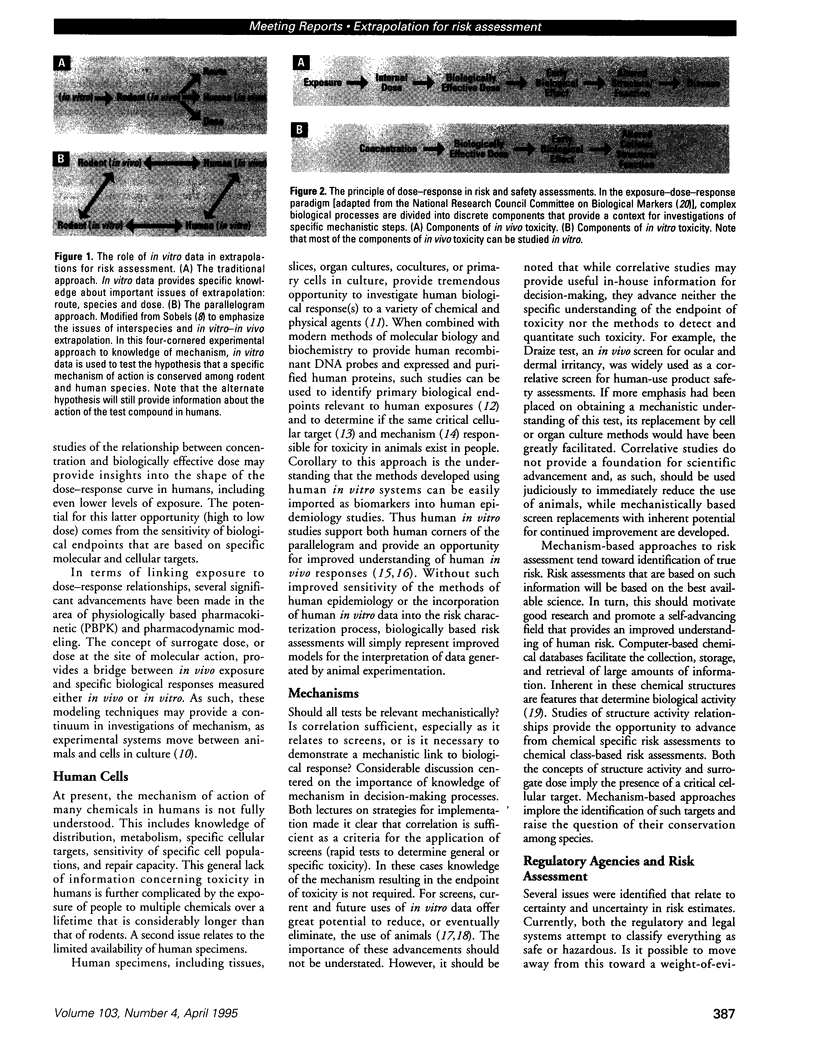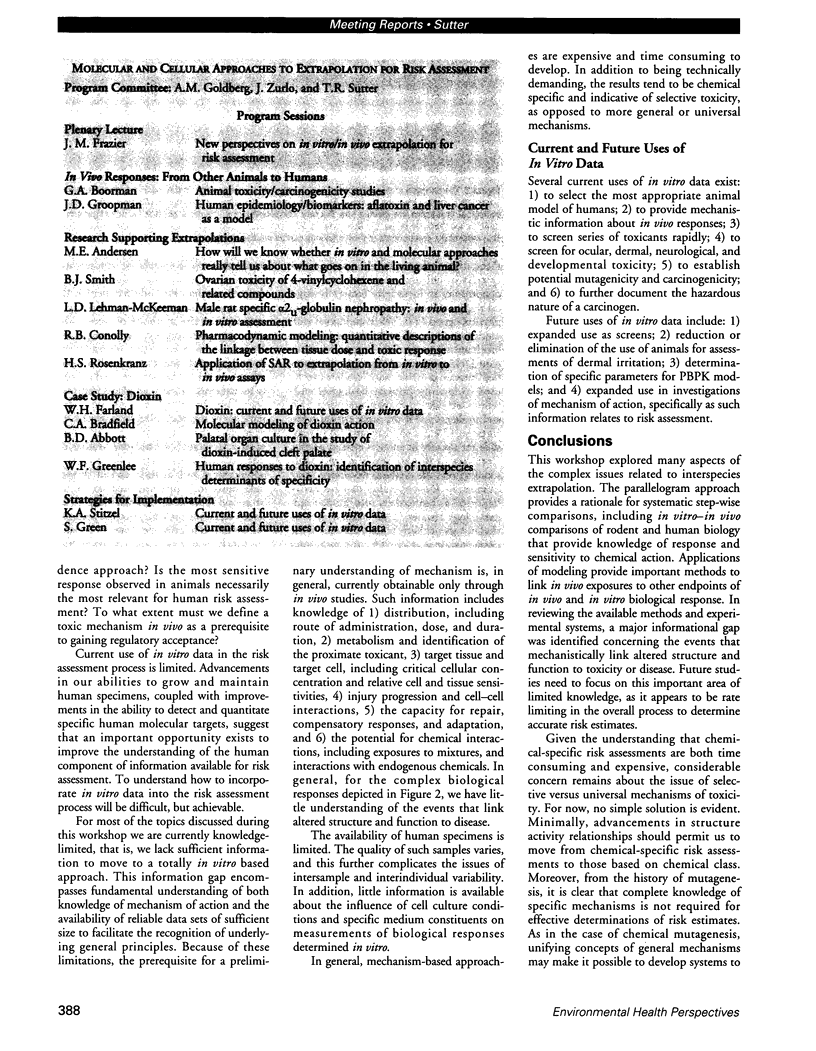Full text
PDF



Images in this article
Selected References
These references are in PubMed. This may not be the complete list of references from this article.
- Bruner L. H. Alternatives to the use of animals in household product and cosmetic testing. J Am Vet Med Assoc. 1992 Mar 1;200(5):669–673. [PubMed] [Google Scholar]
- Cohen S. M., Ellwein L. B. Risk assessment based on high-dose animal exposure experiments. Chem Res Toxicol. 1992 Nov-Dec;5(6):742–748. doi: 10.1021/tx00030a002. [DOI] [PubMed] [Google Scholar]
- Conolly R. B., Andersen M. E. Biologically based pharmacodynamic models: tools for toxicological research and risk assessment. Annu Rev Pharmacol Toxicol. 1991;31:503–523. doi: 10.1146/annurev.pa.31.040191.002443. [DOI] [PubMed] [Google Scholar]
- Davidson I. W., Parker J. C., Beliles R. P. Biological basis for extrapolation across mammalian species. Regul Toxicol Pharmacol. 1986 Sep;6(3):211–237. doi: 10.1016/0273-2300(86)90014-0. [DOI] [PubMed] [Google Scholar]
- Greenlee W. F., Sutter T. R., Marcus C. Molecular basis of dioxin actions on rodent and human target tissues. Prog Clin Biol Res. 1994;387:47–57. [PubMed] [Google Scholar]
- Groopman J. D., Kensler T. W. Molecular biomarkers for human chemical carcinogen exposures. Chem Res Toxicol. 1993 Nov-Dec;6(6):764–770. doi: 10.1021/tx00036a004. [DOI] [PubMed] [Google Scholar]
- Harris C. C. Human tissues and cells in carcinogenesis research. Cancer Res. 1987 Jan 1;47(1):1–10. [PubMed] [Google Scholar]
- Huff J. Issues and controversies surrounding qualitative strategies for identifying and forecasting cancer causing agents in the human environment. Pharmacol Toxicol. 1993;72 (Suppl 1):12–27. doi: 10.1111/j.1600-0773.1993.tb01664.x. [DOI] [PubMed] [Google Scholar]
- Klopman G., Rosenkranz H. S. International Commission for Protection Against Environmental Mutagens and Carcinogens. Approaches to SAR in carcinogenesis and mutagenesis. Prediction of carcinogenicity/mutagenicity using MULTI-CASE. Mutat Res. 1994 Feb 1;305(1):33–46. doi: 10.1016/0027-5107(94)90124-4. [DOI] [PubMed] [Google Scholar]
- Smith B. J., Sipes I. G., Stevens J. C., Halpert J. R. The biochemical basis for the species difference in hepatic microsomal 4-vinylcyclohexene epoxidation between female mice and rats. Carcinogenesis. 1990 Nov;11(11):1951–1957. doi: 10.1093/carcin/11.11.1951. [DOI] [PubMed] [Google Scholar]
- Sobels F. H. Environmental mutagenesis in retrospect. Mutat Res. 1987 Dec;181(2):299–310. doi: 10.1016/0027-5107(87)90106-0. [DOI] [PubMed] [Google Scholar]
- Sobels F. H. Evaluating the mutagenic potential of chemicals. The minimal battery and extrapolation problems. Arch Toxicol. 1980 Nov;46(1-2):21–30. doi: 10.1007/BF00361242. [DOI] [PubMed] [Google Scholar]
- Sobels F. H. Some problems associated with the testing for environmental mutagens and a perspective for studies in "comparative mutagenesis". Mutat Res. 1977 Aug;46(4):245–260. doi: 10.1016/0165-1161(77)90001-2. [DOI] [PubMed] [Google Scholar]
- Tennant R. W., Margolin B. H., Shelby M. D., Zeiger E., Haseman J. K., Spalding J., Caspary W., Resnick M., Stasiewicz S., Anderson B. Prediction of chemical carcinogenicity in rodents from in vitro genetic toxicity assays. Science. 1987 May 22;236(4804):933–941. doi: 10.1126/science.3554512. [DOI] [PubMed] [Google Scholar]
- Wogan G. N. Molecular epidemiology in cancer risk assessment and prevention: recent progress and avenues for future research. Environ Health Perspect. 1992 Nov;98:167–178. doi: 10.1289/ehp.9298167. [DOI] [PMC free article] [PubMed] [Google Scholar]







